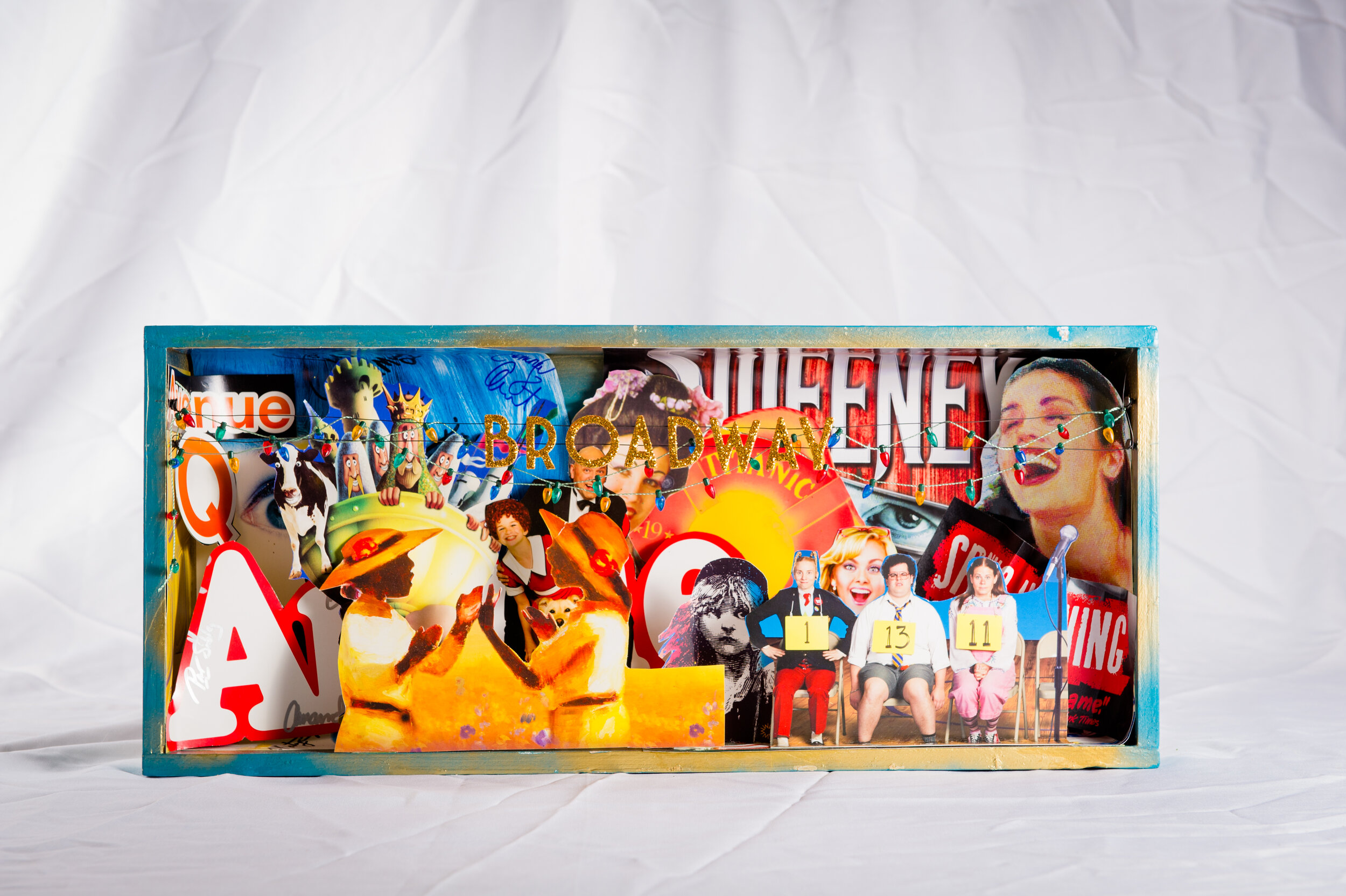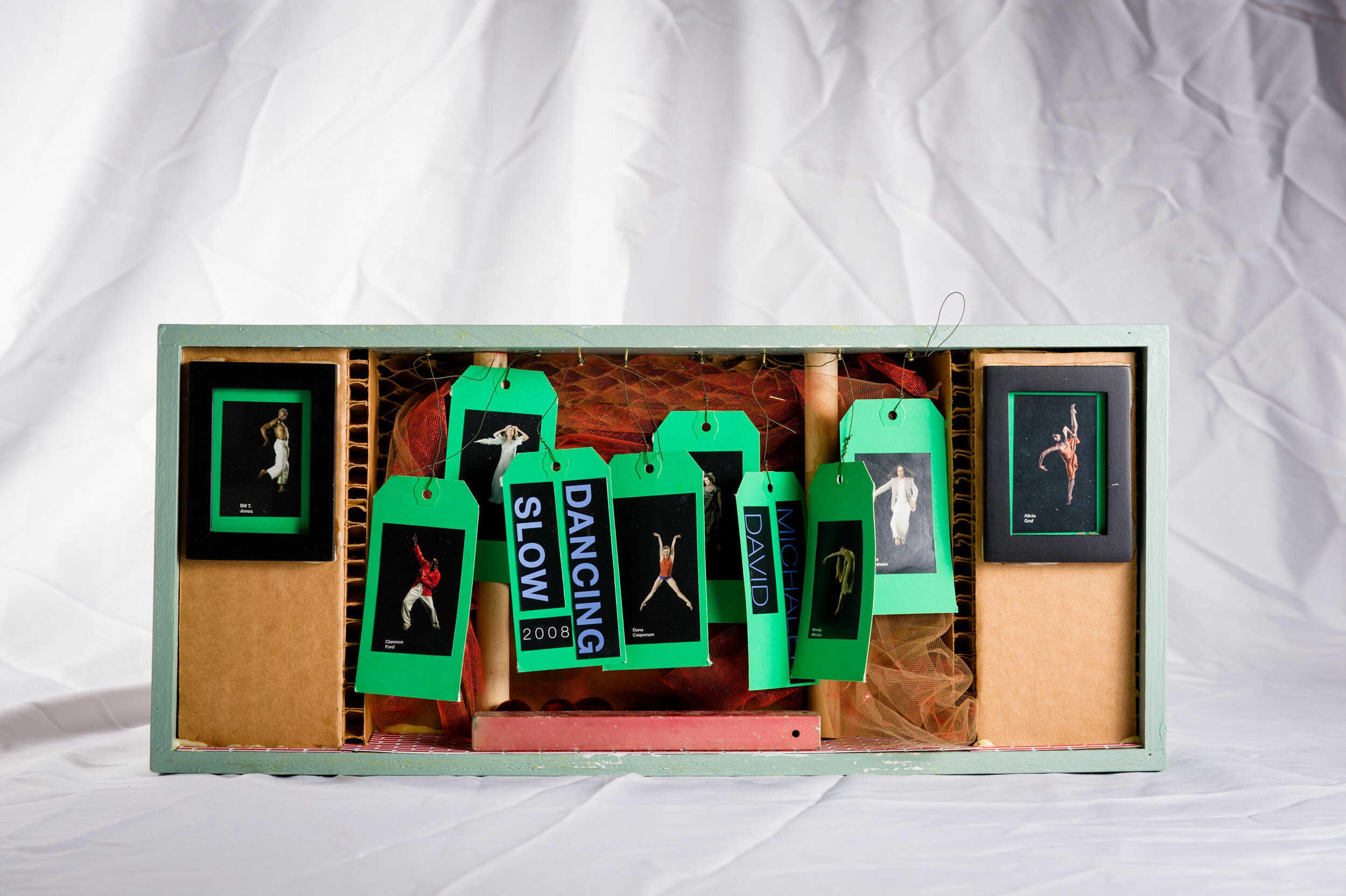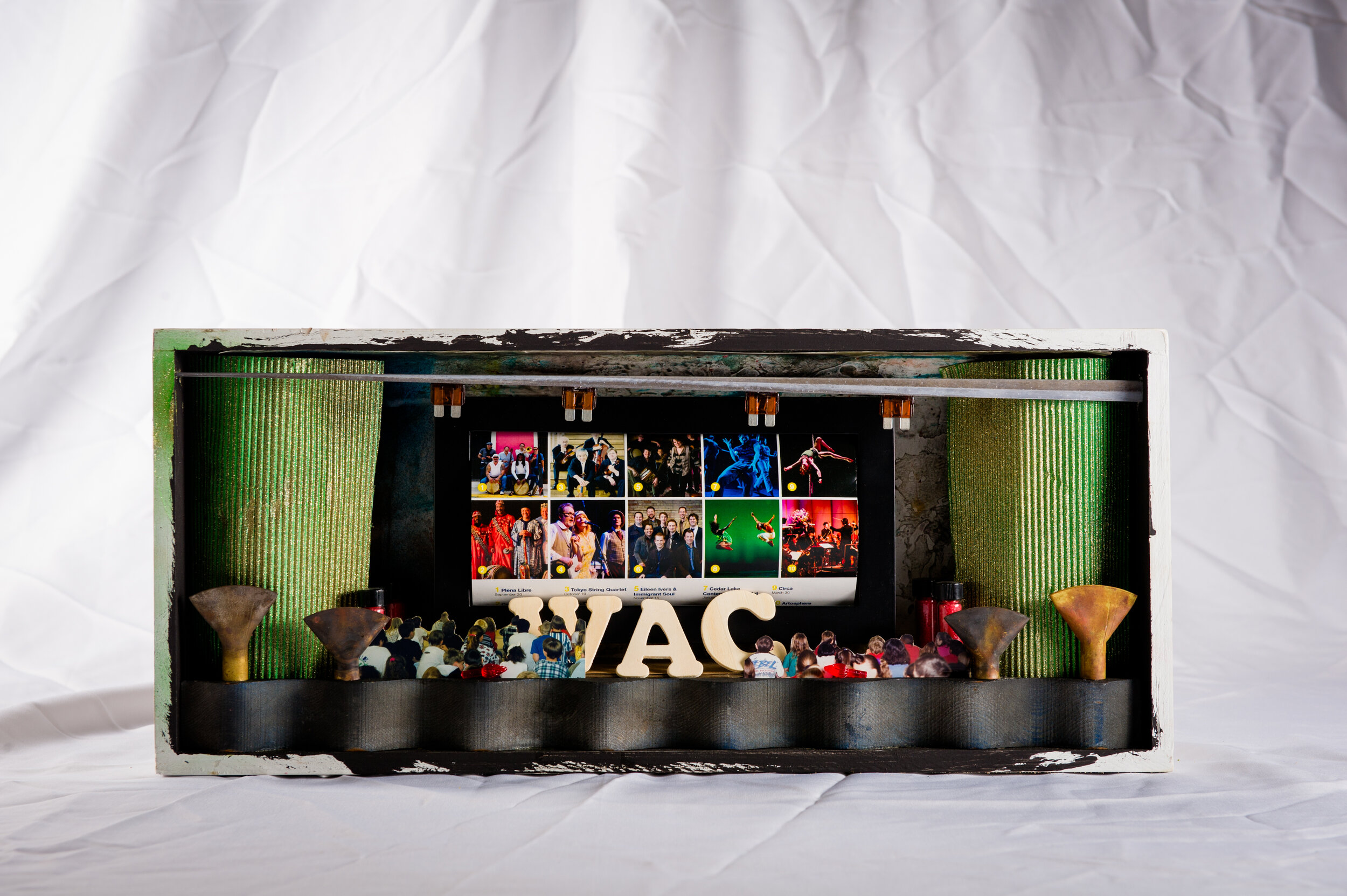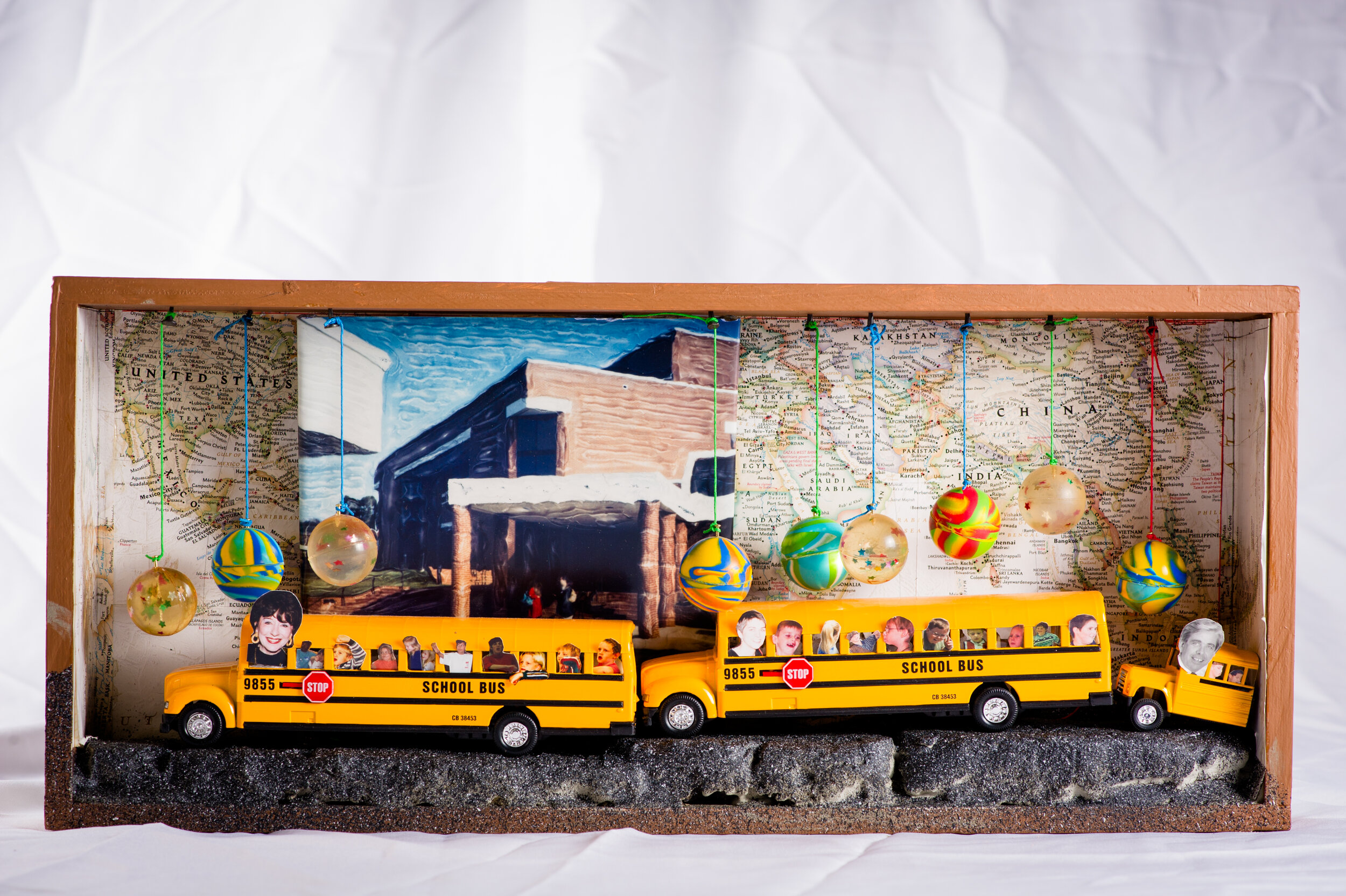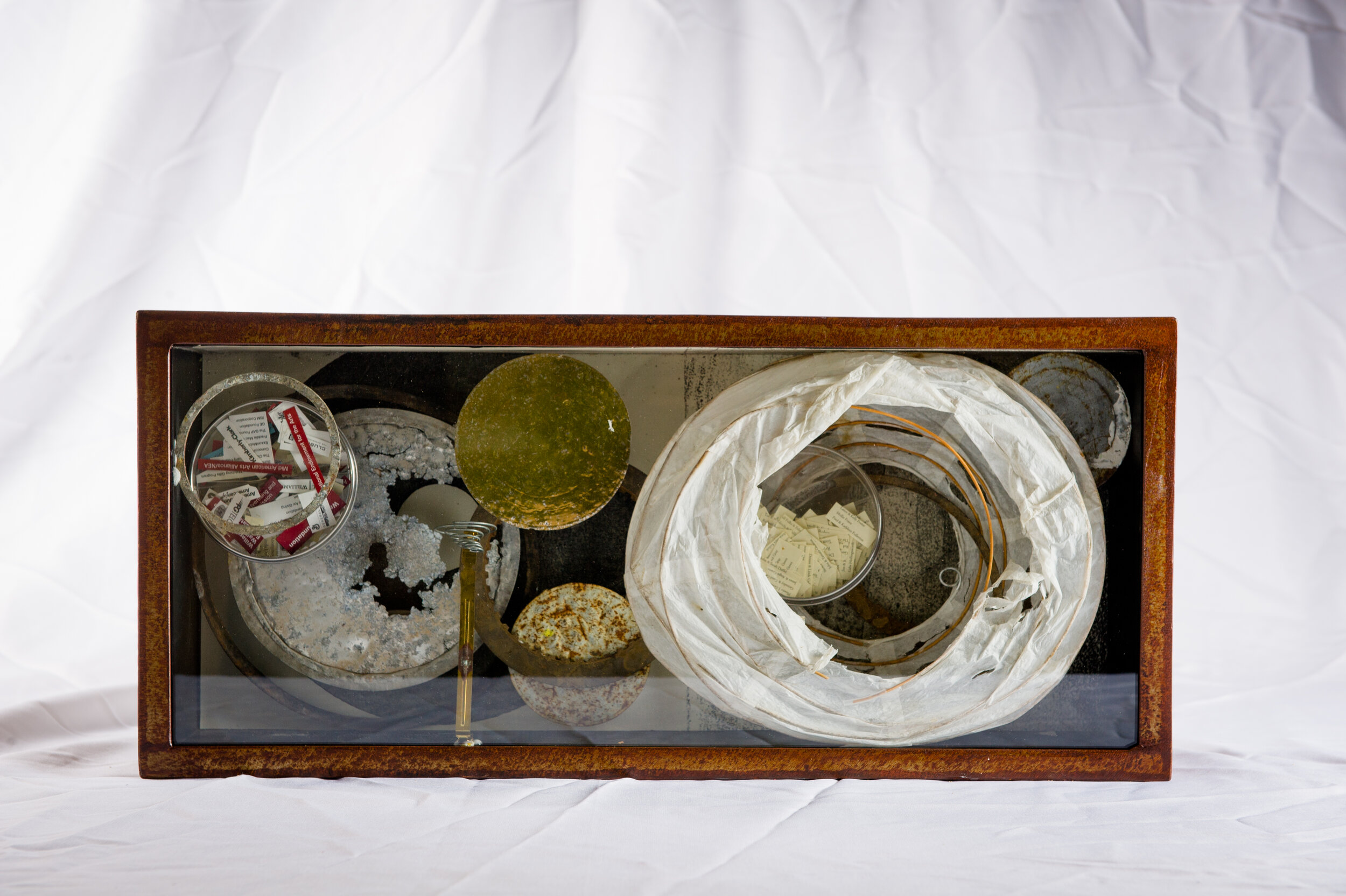Billie Jo Starr and Helen Walton celebrate the Grand Opening of Walton Arts Center in 1992.
Walton Arts Center began because the public and private sectors in Northwest Arkansas had a vision and worked together for the good of the community. Negotiations, compromise, persistence and a shared vision ultimately yielded a facility and an organization that has enriched the cultural life of the region for nearly three decades.
In the late 1980s the Walton Family, the University of Arkansas and the city of Fayetteville each individually realized the need for a community arts facility that could accommodate major touring shows, local and regional performing acts and even corporate meetings. The University and the city formed an Interlocal Agreement and proceeded with plans for the arts center focusing on a 1,200-seat hall located on Dickson Street.
Walton Arts Center before the 2016 renovation and expansion
Initial funding for Walton Arts Center came from generous donations by the Walton Family Foundation, the University of Arkansas and the city of Fayetteville. Additional funds were also raised from the private sector, and Walton Arts Center was completed debt free and opened on April 26, 1992.
In November 2016, Walton Arts Center debuted an expanded facility that dramatically increased front of house and event space, production support space and administrative offices. The expansion added more than 30,000 square feet and improved the experience for both patrons and artists alike.
Today Walton Arts Center has become Arkansas’ premier arts presenter, bringing great performing artists and entertainers from around the world to the region each year. The organization has grown significantly since opening and now operates two additional facilities—Nadine Baum Studios and the Walmart AMP.
Walton Arts Center is home to two resident companies: the Symphony of Northwest Arkansas—the region’s professional symphony orchestra, and Community Creative Center—an art studio for adults and youth. Artistic affiliates include Trike Theatre (Northwest Arkansas’s professional theater company for children) and Opera Fayetteville.
Walton Arts Center believes that access to the arts is essential for all. We strive to make performing arts experiences accessible to the community through our education initiatives and diverse programming.
The 2016 renovation gave Walton Arts Center a new façade that connects the building to Dickson Street and many expanded areas including Walker Atrium.
In a typical season more than 26,000 children get to see a live theater performance at Walton Arts Center each through our school partnerships and education initiatives. We also take professional artists into classrooms and schools to teach and inspire students. In partnership with the Kennedy Center, we provide arts integration training for teachers to transform how teachers teach as well as how students learn.
Every year we bring performances that are “new to Arkansas” for our audiences, ranging from touring Broadway shows and concert artists of every genre to dance and cirque companies.
Some of the most diverse and accessible productions at Walton Arts Center are part of the 10x10 Arts Series. Tickets for these performances are deeply subsidized by grants and corporate sponsors, resulting in a ticket price of merely $10. Many of these performances also offer reduced-price matinee performances for area school children.
Walton Arts Center also brings diverse and accessible programs to Northwest Arkansas as an arts programming producer. Our original festivals include Artosphere: Arkansas’ Arts and Nature Festival, Voice Jam Acapella Festival and the Mosaix Festival.
Walton Arts Center is helping to ensure that the performing arts continue to be a vital part of life in our region. We look toward the future, now positioned to respond to the needs of one of the fastest growing metropolitan areas in the country.


























